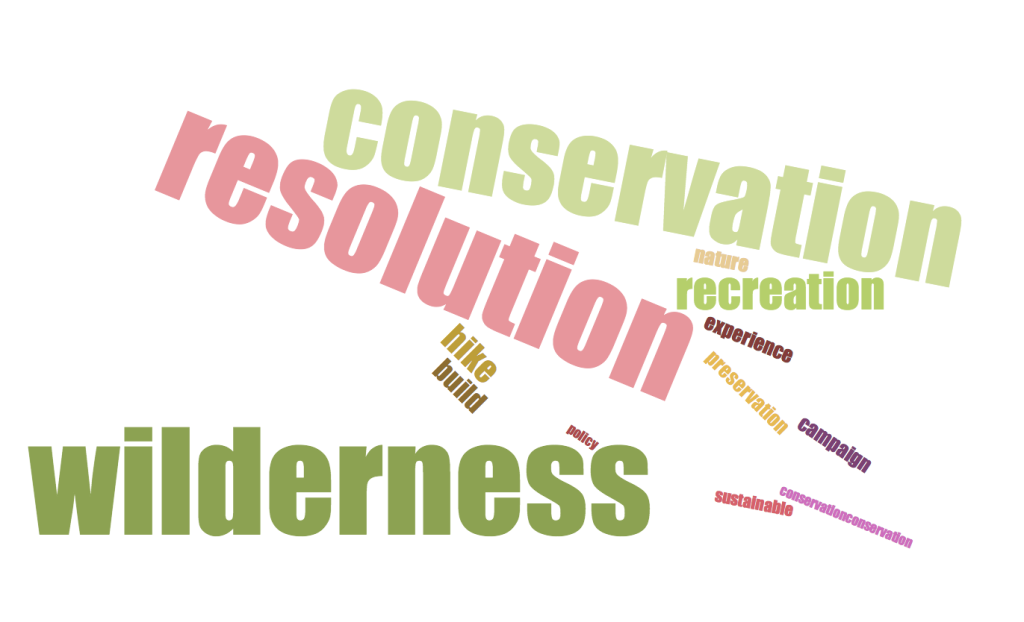The intensive research part of our project focuses on the word choice and subsequent themes of the FWOC annual newsletter Outdoors West. This newsletter, delivered twice a year by mail, is a culmination of all news, events, and resolutions pertinent to FWOC’s member organizations. A typical newsletter begins with a message from the president, followed by an update on the upcoming convention, complete with schedule and important keynote biographical information. Outdoors West then lays out conservation issues FWOC is choosing to support and updates on past issues of interest. Finally, it presents news from each member organization and provides book and DVD reviews.
We acquired twelve years (2000-2012) of this newsletter as well as a copy from 1967. After skimming through several of them to get a better idea of what they contained, we decided to pick twelve key words that we determined were of import to FWOC (i.e. conservation, preservation, wilderness) and words important to the young environmental activists they are trying to attract (i.e. sustainable, experience). We then scanned the documents and used character recognition on Adobe Acrobat Pro to convert the scanned images to text and discover how many time each word was used per issue. In looking at the word choice and frequency of the words, we hoped to see an change in the word usage, especially between the 1967 copy and the late 2000s. This would illustrate a change in ideals within the organization that may or may not coincide with the changes in mindset of the general public. The list of words we chose to include was as follows:
- conservation
- preservation
- wilderness
- resolution
- campaign
- build/built
- leisure
- experience
- hike
- recreation
- nature
- sustainable
After completing this word count for one issue per year of the newsletter, we compiled a graph of our results.
Using this graph as a reference, we used each issue’s word count to create a Wordle word cloud to provide a visual representation of which words are being used most often. In creating these clouds, we hoped to see a significant difference between each issue. However, this was not the case and we ultimately ended up not using this as our main representation.

To compare FWOC’s word usage to that of the general public, we used Google Trends to create graphs of these words and the frequency with which they are searched over time. The graphs below display our results.
After briefly analyzing these graphs in comparison to FWOC’s word usage, it is evident that there are some key terms important to FWOC that do not coincide with the interest of the general public. In 2012 the words recreation and experience topped the charts. In Outdoors West, however, these words were only used five and four times, respectively when words like wilderness were mentioned forty-two times. In the Google Trends over time graph, wilderness was used the fewest amount of times among the other words surveyed. This disparity provides important data in that it illustrates a difference between FWOC and the rest of the world. The people googling these terms are probably generally younger and therefore of the demographic that FWOC wants to acquire. FWOC’s perceptions are not evolving in the same way that the rest of the world’s are.